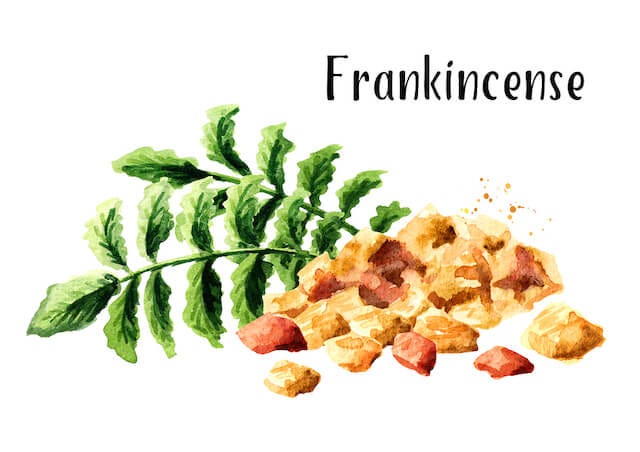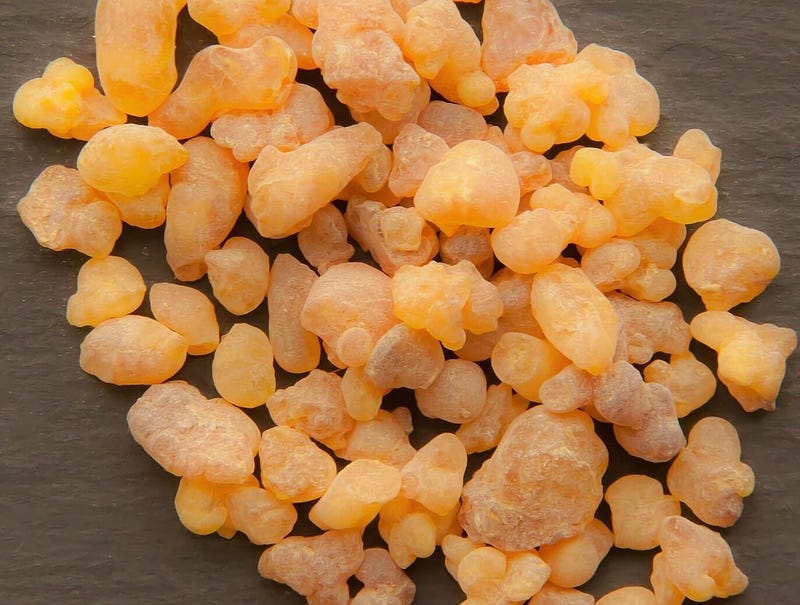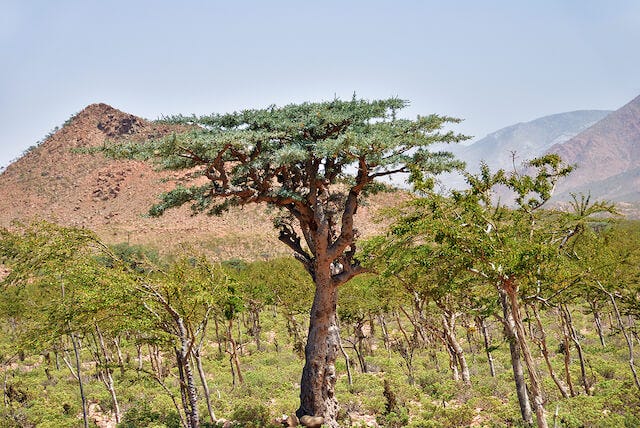Discovering the Wonders of Frankincense Essential Oil
Written on
Chapter 1: Introduction to Frankincense Essential Oil
Frankincense essential oil is well-known for its aromatic qualities and is derived from the resin of trees in the Burseraceae family. This oil has been a valuable trade item across the Arabian Peninsula, utilized in religious ceremonies and for its therapeutic applications. Additionally, it appears in numerous essential oil blends and personal care products. Understanding the various constituents of different frankincense species can aid in selecting the most suitable type for your needs.

Chapter 2: The Aroma of Frankincense
Frankincense oils, particularly those from the Boswellia genus, are characterized by their resinous fragrance. With a scent strength rated at three, they serve as base notes in many perfumes. Due to their pleasant aroma and therapeutic properties, these oils are widely used in perfumery, aromatherapy, and skincare.
Section 2.1: Key Constituents of Frankincense Resin
Among the notable compounds found in frankincense resin is incensole acetate, a diterpene alcohol that stimulates the TRPV3 mRNA. This activation results in a soothing, warming sensation on the skin, contributing to an uplifting and calming atmosphere. Historically, this may explain why frankincense resin has been utilized in spiritual practices for centuries. However, it's important to note that incensole acetate does not survive the distillation process and, therefore, is absent in the essential oil.

Subsection 2.1.1: The Role of Boswellic Acids
Frankincense resin also contains boswellic acids. These acids are water-soluble and typically not found in essential oils, although they can appear in certain extracts. The primary boswellic acids, including α-boswellic acid and 11-keto-β-boswellic acid, are known for their protective effects throughout the body.

Section 2.2: Varieties of Frankincense Essential Oil
There are seven distinct species of frankincense, each showcasing unique chemical properties. Below is a summary of the species along with their primary constituents:
- Boswellia carterii — α-Pinene 28–49%, β-Thujene 10–22%, Limonene
- Boswellia frereana — α-Pinene 42–80%, Sabinene 0.5–21%
- Boswellia neglecta — β-Thujene 19%, α-Pinene 17%, Terpinen-4-ol 13%
- Boswellia papyrifera — Octyl acetate 50–60%, 1-Octanol 3.5–12.7%
- Boswellia rivae — Limonene 28%, β-Carene 16%, α-Pinene 13%
- Boswellia sacra — α-Pinene 10–51%, β-Phellandrene 0–42%
- Boswellia serrata — β-Thujene 26–47%, α-Pinene 0–11%

Section 2.3: Choosing the Right Frankincense
The distinctive chemical makeup of each frankincense species offers a range of benefits and uses. The most commonly used species in essential oils are B. carterii, B. sacra, and B. frereana. These species typically grow in specific regions, with B. carterii found in Somalia and Yemen, B. frereana also in Somalia, and B. sacra exclusively in Oman.
If you're seeking an economical choice, B. carterii is your best bet. It serves multiple purposes and can enhance the effects of other essential oils. Conversely, B. sacra is recognized for its more potent anti-inflammatory properties, while B. frereana is favored for its brighter, citrus-like scent and emotional support benefits.
Chapter 3: Practical Applications of Frankincense
If you’re interested in crafting your own products with frankincense essential oil, consider trying out the Liquid Courage Roll-On or my Skin Nourishing Ointment recipe.
The first video, How to Use Frankincense Essential Oil | Young Living Essential Oils, provides insightful tips on incorporating this oil into your daily routine.
In the second video, Frankincense Oil: The King of All Essential Oils?, discover the reasons behind the esteemed status of frankincense in the world of essential oils.
For those eager to deepen their understanding of essential oils and natural health, I invite you to join The Club, a hub for education on these topics!
Originally posted to lindseyelmore.com on May 29, 2019.